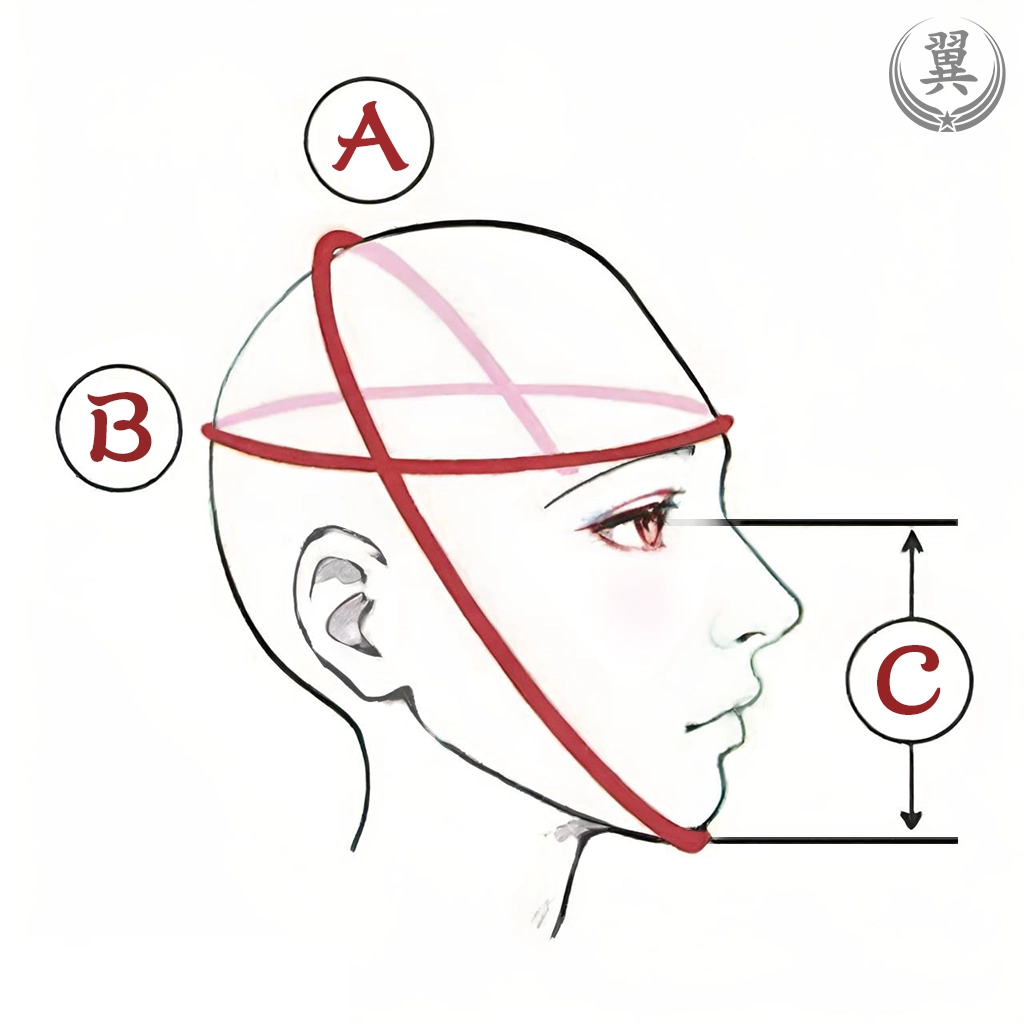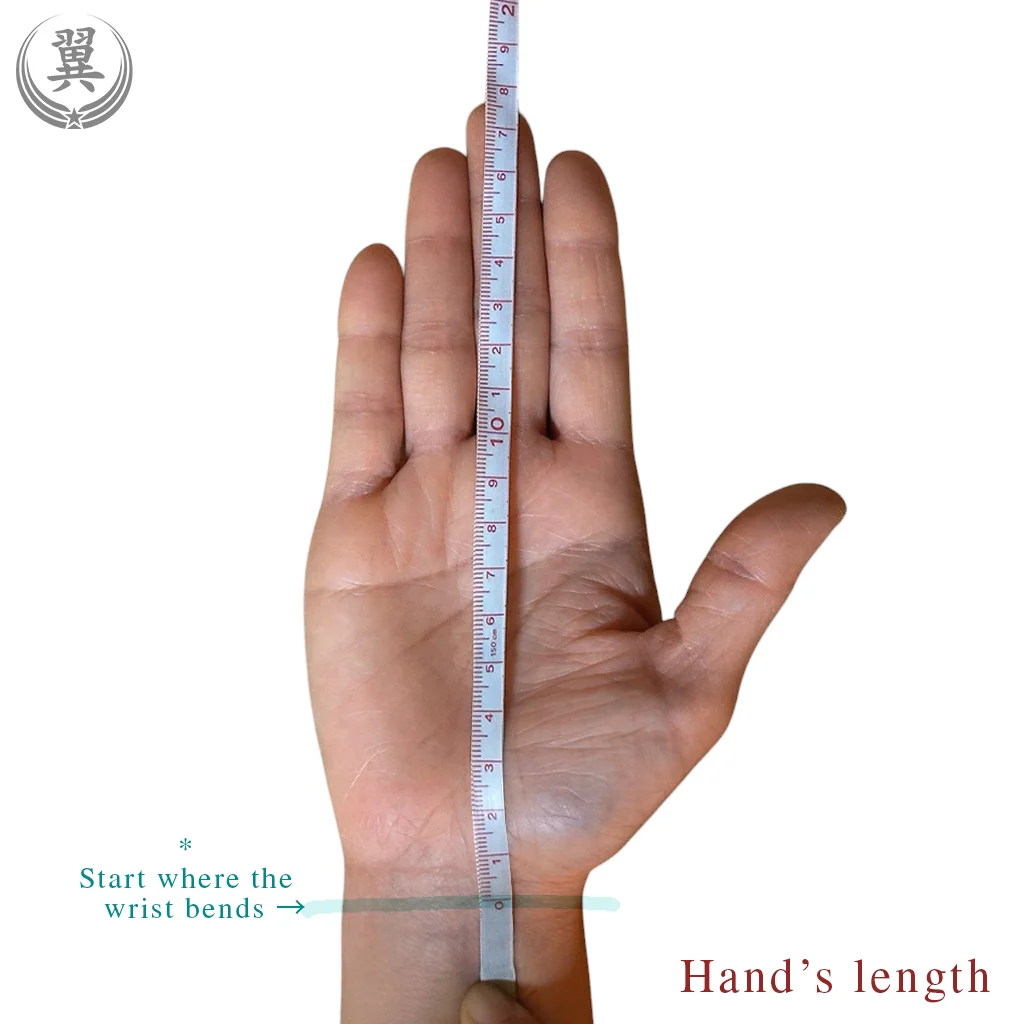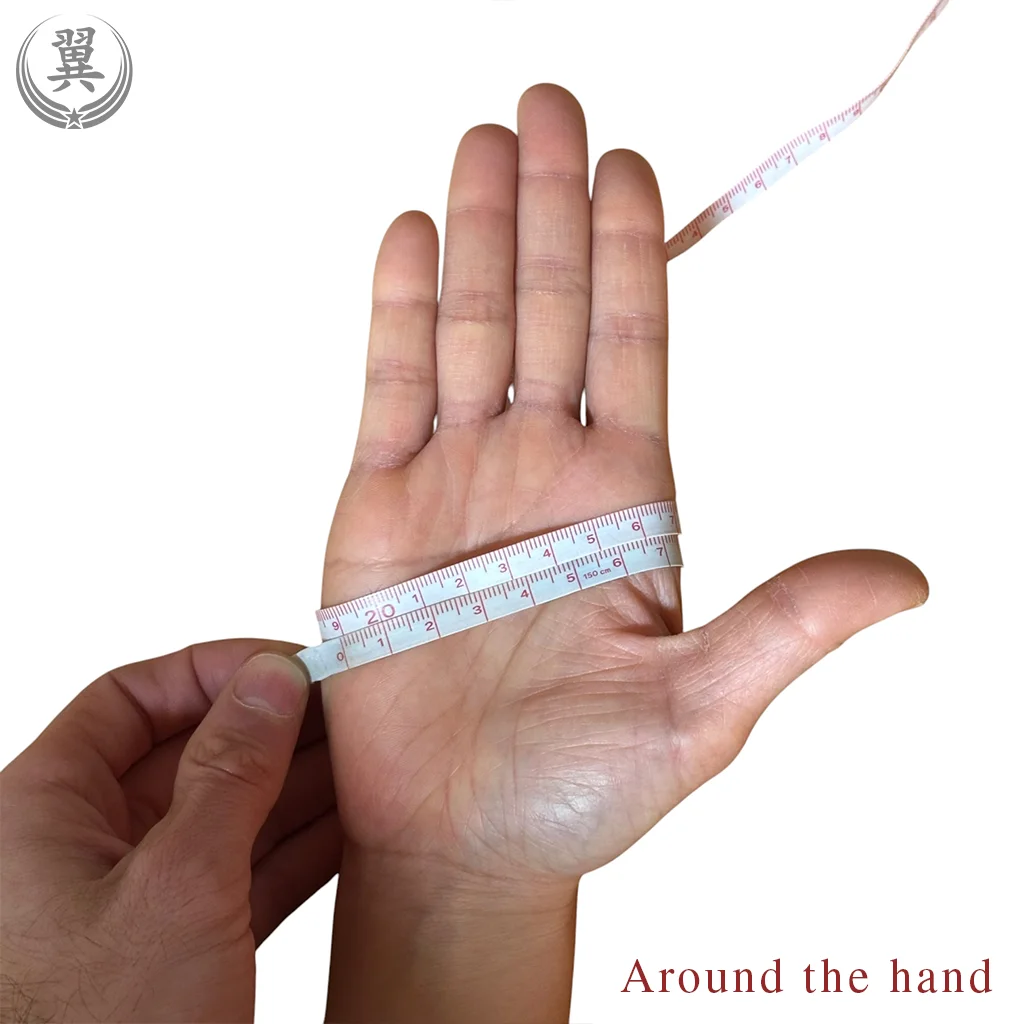WHAT TO MEASURE AND HOW:
Foreword
Taking your measurements accurately is essential for getting a suitable equipment. Before explaining the measuring areas we would like to mention a few tips about how to make precise measurements. By following them, you will help us making sure to provide you with the right gear.
- We use centimeters (cm). In case of inches and other measuring lengths, please convert the result into centimeters.
- Some measurements are difficult to almost impossible to take by oneself correctly. Please ask someone else to help you while you are sitting still in a proper posture.
- Please use a flexible measuring tape, and avoid the rigid metal one (otherwise this could lead to inaccurate measurements).
- Please do not use a thread or other items to attempt measuring it afterwards. This only increases the chances of mistake.
- Your hand should always be flat, and palms opened while measuring.
- Your face and head (jaw) must be relaxed, but with the mouth closed.
- The measuring tape should not be loose, but neither digging into your skin. Just apply it firmly.
- If possible, please take the same measurements a few times in a row to make sure of their accuracy. For the Kote, you can try both of your hands to have the average measurements.
- Do not add or take any digit after getting a measure. In case of any doubt you are always welcome to contact us. We can check if the measurements are taken properly by sending us pictures of them (where the measured area and digits of the measuring-tape are visible).
*About mistakes on your order, adjusts and returns policy, please enter here!
 |
(A) Around the Face: What is it for? This is your head's overall size. It decides the size of the Men's Uchiwa that will best fit your head. How to measure it? Begin at your chin and make your way up to the furthest point on the opposite side of your head (the most prominent area). To put it another way, it must be the largest circumference you can attain, starting measuring at your chin. (B) "Hachimaki" (Around the Head): What is it for? This is your head's circumference. This measurement ensures that your head does not protrude beyond the protection provided by the Menbuton in the back. How to measure it? Begin above your eyebrows and work your way to the farthest point on the opposite side of your head, where the skull may protrude slightly (depending on the person). (C) "Monomi" (Height of the Eyes): What is it for? This is the distance between your eyes and your chin. It is important to ensure that the largest interval in the mengane, known as "Monomi" corresponds accurately to the level of your eyes, so that you can see clearly through it. How to measure it? The ideal method is to place your chin flat on a level surface, such as a table top, and measure the distance between it and the corner of your eye. However, with help of somebody else, just measure this area by placing a ruler vertically in front of your face, and count the length between the tip of the chin, up to the middle segment of your eyeball. |
 |
(D) Hand's Length: What is it for? This is the size of your entire hand. It determines the overall Kote size that will suit your hand. How to measure it? Begin at your wrist (just below your palm), then make your way up to the tip of your longest finger (typically your middle finger). It has to be the longest distance you can measure between your wrist and the tip of your fingers. * The starting point should be placed where your wrist actually bends, which is usually located around 0.5cm to 1 cm below the palm initial line, as shown on the picture on the side. |
 |
(E) Around the Hand: What is it for? This is the circumference of your hand at its widest point without your thumb. Determines how your hand will fit in the Kote in terms of width. How to measure it? You need to measure diagonally around the knuckles area and the prominent point of the side of your hand (opposite to your thumb) as shown on the picture, with your hand flat and open palm. * The diagonal measurement around the hand should give you a larger number than the hand's length, usually +1cm or +3cm. * In case of doing also the horizontal measurement just around the knuckles, this should give you approximately the same measure as the hand's length. |
| * In case of Custom or Order-made equipment, further information might be required. We may contact you by email for these special measurements and details. * Some products may have their own measurements and size charts, which can be found on the corresponding product pages. * In case of any doubt or need of assistance, you are more than welcome to contact us directly at: mail@tsubasabudogu.com |
|
